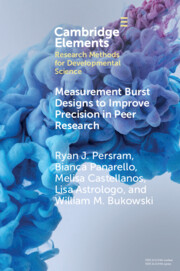Element contents
Measurement Burst Designs to Improve Precision in Peer Research
Published online by Cambridge University Press: 20 September 2021
Summary
- Type
- Element
- Information
- Online ISBN: 9781108986038Publisher: Cambridge University PressPrint publication: 14 October 2021
References
- 7
- Cited by

